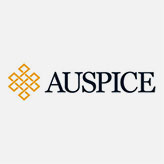May 23, 2025
Commodities: Offense Sells Tickets, but Defense Wins Championships

CI ETF Pulse
As inflation risks re-emerge in 2025 and market uncertainty persists, investors are revisiting commodity exposure – but are they looking in the right place?
The go-to “hedges” like gold and treasury inflation-protected securities (TIPS) have historically fallen short when inflation pressures materialized. Instead, the most resilient performance has come from diversified, risk-managed commodity strategies, like the one employed in CI Auspice Broad Commodity Fund (CCOM).
Gold and TIPS: misunderstood inflation hedges
Looking at the past five years – split into an inflationary period followed by a disinflationary one – traditional hedges like TIPS and gold underwhelmed when they were needed most.
We aren’t negative on gold – it remains one of many commodities CCOM can be exposed to when price trends are favourable. It can do well as a “risk-off” trade during periods of uncertainty, as exhibited in H1 2020 before inflation started to rise. But data suggests it’s not the reliable inflation hedge many assume. The same goes for TIPS, which have shown limited effectiveness and inconsistent impact in most portfolios.
A better way to access commodities: diversified and tactical
Commodity cycles are complex. Each year can bring a different theme:
- 2020 – Gold rallied during COVID’s onset but then stagnated for two years.
- 2021 – ESG-linked trades like lithium and copper surged, only to correct deeply.
- 2022 – Energy-reversed ESG trends, outperforming solar and EV-related themes.
- 2023 - 2024 – Having traded sideways for years, uranium and related stocks finally delivered performance, capturing investor sentiment and flows. In 2025, they have corrected.
- 2025 – Following three years of consolidation, gold and silver finally recaptured headlines and investor sentiment. Gold has reached all-time highs.
These rotations highlight why a diversified, trend-driven strategy like CCOM's is critical. The goal is not to time the next commodity story, but to stay exposed to the right ones, at the right time, using a rules-based, long/flat approach that adapts as trends evolve.
What sets CCOM apart?
CI Auspice Broad Commodity Fund (CCOM) tracks the Auspice Broad Commodity Index, a rules- based index that tactically allocates across 12 core commodities in energy, metals, and agriculture. The strategy is built for both offense and defense:
- Participation in upside via long positions in trending markets.
- Capital preservation by shifting to cash when trends fade – this flat positioning helps reduce drawdowns compared to traditional long-only commodity exposures.
Final takeaway
With gold’s impressive rally last year and into 2025, markets may be excited by the lustre of gold right now, but as we've seen repeatedly, it’s risk management and a good strategy – not performance chasing – that wins out over the long term. Like investing in equities, buying just one commodity comes with significant risk, and performance chasing can lead to disappointing returns.
CCOM provides a disciplined, adaptable approach – participating in commodity rallies when they occur, and stepping aside when they don’t. In today’s environment of inflation uncertainty and rising volatility, that kind of tactical offense paired with downside risk management, can be exactly what portfolios need.
Glossary:
Correlation: A statistical measure of how two securities move in relation to one another. Positive correlation indicates similar movements, up or down, while negative correlation indicates opposite movements (when one rises, the other falls).
Drawdown: Measures the peak-to-trough decline of an investment or, in other words, the difference between the highest and lowest price over a given timeframe.
Liquidity: The degree to which an asset or security can be quickly bought or sold in the market without affecting the asset’s price. Cash is considered to be the most liquid asset, while things like fine art or rare books would be relatively illiquid.
Sharpe Ratio: A risk-adjusted return measure calculated by using standard deviation and excess return to determine reward per unit of risk. The higher the Sharpe Ratio, the better the portfolio's historical risk-adjusted performance.
Volatility: Measures how much the price of a security, derivative, or index fluctuates. The most commonly used measure of volatility when it comes to investment funds is standard deviation.
About the Author
Auspice Capital Advisors Ltd. is an innovative alternative asset manager that focuses on applying rules-based investment strategies across a broad range of financial and commodity markets. Auspice offers liquid alternative and commodity strategies that provide the benefits of active management and the efficiency of indexing. By being rules-based, Auspice offers products with greater transparency, liquidity, and cost effectiveness via multiple delivery mechanisms (Funds, Managed Accounts, ETFs, Indexes, and bespoke products).
Auspice works with a wide range of clients and develops solutions to improve their portfolio or product suite. Our strategies are available to institutions, financial professionals and high net worth individual investors as well as retail investors through the Auspice brand as well as sub-advisory and licensing arrangements.
IMPORTANT DISCLAIMERS
Commissions, management fees and expenses all may be associated with an investment in exchange-traded funds (ETFs). You will usually pay brokerage fees to your dealer if you purchase or sell units of an ETF on recognized Canadian exchanges. If the units are purchased or sold on these Canadian exchanges, investors may pay more than the current net asset value when buying units of the ETF and may receive less than the current net asset value when selling them. Please read the prospectus before investing. Important information about an exchange-traded fund is contained in its prospectus. ETFs are not guaranteed; their values change frequently, and past performance may not be repeated.
The CI Auspice Broad Commodity Fund is an alternative mutual fund. It has the ability to invest in asset classes or use investment strategies that are not permitted for conventional mutual funds. The specific strategies that differentiate this fund from conventional mutual funds include: increased use of derivatives for hedging and non-hedging purposes; increased ability to sell securities short; and the ability to borrow cash to use for investment purposes. While these strategies will be used in accordance with the fund’s investment objectives and strategies, during certain market conditions they may accelerate the pace at which your investment decreases in value.
Auspice Capital Advisors Ltd. are portfolio subadvisors to certain funds offered and managed by CI Global Asset Management.
The opinions expressed in the communication are solely those of the author(s) and are not to be used or construed as investment advice or as an endorsement or recommendation of any entity or security discussed. This document is provided as a general source of information and should not be considered personal, legal, accounting, tax or investment advice, or construed as an endorsement or recommendation of any entity or security discussed. Every effort has been made to ensure that the material contained in this document is accurate at the time of publication. Market conditions may change which may impact the information contained in this document. All charts and illustrations in this document are for illustrative purposes only. They are not intended to predict or project investment results. Individuals should seek the advice of professionals, as appropriate, regarding any particular investment. Investors should consult their professional advisors prior to implementing any changes to their investment strategies.
Certain statements in this document are forward-looking. Forward-looking statements (“FLS”) are statements that are predictive in nature, depend upon or refer to future events or conditions, or that include words such as “may,” “will,” “should,” “could,” “expect,” “anticipate,” “intend,” “plan, “believe,” or “estimate,” or other similar expressions. Statements that look forward in time or include anything other than historical information are subject to risks and uncertainties, and actual results, actions or events could differ materially from those set forth in the FLS. FLS are not guarantees of future performance and are by their nature based on numerous assumptions.
Although the FLS contained herein are based upon what CI Global Asset Management and the portfolio manager believe to be reasonable assumptions, neither CI Global Asset Management nor the portfolio manager can assure that actual results will be consistent with these FLS. The reader is cautioned to consider the FLS carefully and not to place undue reliance on FLS. Unless required by applicable law, it is not undertaken, and specifically disclaimed that there is any intention or obligation to update or revise FLS, whether as a result of new information, future events or otherwise.
Certain names, words, titles, phrases, logos, icons, graphics, or designs in this document may constitute trade names, registered or unregistered trademarks or service marks of CI Investments Inc., its subsidiaries, or affiliates, used with permission. All other marks are the property of their respective owners and are used with permission.
Certain statements contained in this communication are based in whole or in part on information provided by third parties and CI Global Asset Management has taken reasonable steps to ensure their accuracy. Market conditions may change which may impact the information contained in this document.
